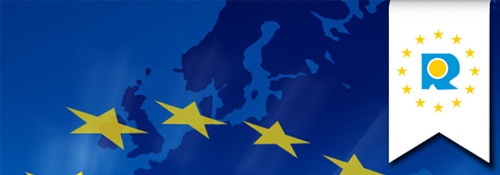#IPLaw #TMlaw – UE Decision against the 3D Mark of KitKat Bars
Since 2007, a litigation occurs between NESTLE (CH) and MONDELEZ (US) (formerly CADBURRY), in particular in Europe. This litigation and the underlying legal reasoning illustrate some elements to be taken into account when a three-dimensional (3D) trademark filing is envisaged.
The subject-matter of the litigation concerns the 3D mark recorded by NESTLE on a chocolate product with 4 glued bars, with an ingot shape. The graphic representation of the mark includes a view in the black and white space of the 4 associated bars without logo.
The European Union Intellectual Property Office (EUIPO) has accepted the registration of the mark with effect from August 7, 2006, with number 002632529, in class 30, designating: “Sweets; bakery products, pastries, cookies; cakes, waffles”.
On 23 March 2007, CADBURRY (later MONDELEZ) initiated a procedure at EUIPO to cancel the 3D mark in question. Looking in the details of this case, we can see that MONDELEZ sells a similar chocolate bar claimed as being a Norwegian chocolate bar “Kvikk Lunsj” (for “Quick Lunch”) marketed since 1933 by the Norwegian company FREIA, bought in 1993 by KRAFT FOODS, which became MONDELEZ Intl. This gives a clear picture of the interest of MONDELEZ in this case.
As for Kit Kat products, they would also have been marketed since 1933.
On 11 January 2011, the EUIPO annulled the mark in first instance, which NESTLE appealed to later obtain a cancellation of the first instance decision and a rejection of the demand of MONDELEZ. In second instance, EUIPO essentially held that even if there is no “inherent distinctiveness”, NESTLE had shown that that mark had acquired such a character in relation to those goods by the use which has been done.
The Court of the European Union seised by MONDELEZ considered in substance that:
1 °) the distinctive character by the use should have been considered not only in the category (30) but in each subcategory (including in particular bakery products) and concludes that the proof is not established for the products other than sweets and biscuits.
2) EUIPO should have taken into account the distinctiveness achieved by use in EU countries. The investigations showed that the distinctive character was acquired in 10 out of 28 countries (Denmark, Germany, Spain, France, Italy, the Netherlands, Austria, Finland,
Sweden and United Kingdom), but EUIPO did not analyze the evidence for the other Member States, namely Belgium, Ireland, Greece and Portugal.
The EU Court refers the case to EUIPO to re-examine the EU-wide distinctiveness for sweets and biscuits.
This shows a disadvantage of unitary IP titles, because individual marks would have been more likely to succeed in each relevant country.
An English decision of January 2016, also went against NESTLE, judging that the shape of chocolate bars can not be filed as a trademark.
As a conclusion, the acquired distinctiveness
– in the relevant category(ies) and subcategories, and
– in the relevant territory
are thus important features to review when intending to claim a protection of a 3D shape as a trademark.




Leave a Reply
Want to join the discussion?Feel free to contribute!